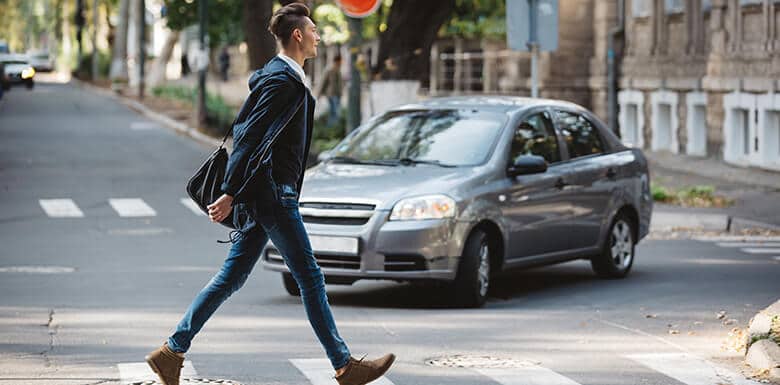April 16, 2021
Who Is at Fault in a Pedestrian vs. Car Accident?
Posted in: Car Accidents, Pedestrian Accident

There were 4,653 pedestrian injuries and 173 pedestrian fatalities statewide in 2019, the latest data available from the Illinois Department of Transportation. Pedestrians in car crashes are 8.2 times more likely to be hurt than those inside the cars.
You might assume that drivers are primarily responsible for an accident involving pedestrians. Are they? Keep reading to find out.
When the Driver Is at Fault
In most pedestrian vs. car crashes, the driver is at fault. Drivers have a duty of care that includes yielding the right of way to pedestrians in many traffic situations. When children are crossing the street, such as a school zone, drivers should exercise even greater caution since children may dart into the road unexpectedly.
A driver can be at fault for a pedestrian accident in situations such as:
- Drunk driving
- Drowsy driving
- Distracted driving
- Reckless driving
- Speeding
- Not yielding the right of way to a pedestrian in a crosswalk
If a pedestrian accident lawyer shows that the driver acted negligently, the driver can be held accountable for a victim’s injuries and damages.
When the Pedestrian Is at Fault
Although pedestrians are at a disadvantage compared to a car’s speed and protection, pedestrians are expected to obey the rules of the road. If the pedestrian broke the law or was somehow responsible for causing their injuries, they might be at fault. This could be true even if they were hurt and the driver was not.
A pedestrian could be found negligent by:
- Crossing outside of a crosswalk: Illinois law says pedestrians must give cars the right of way when they are crossing the street outside of a crosswalk. If you were crossing the road outside of a crosswalk and a car hit you, the driver may not be liable for the crash.
- Crossing intersections diagonally: It is also against the law to cross an intersection at a diagonal. Pedestrians who disregard this law and are hit by a car making a legal turn could have to pay for their own injuries.
Pedestrians are also not allowed to stand in the road to hail a taxi or catch a ride.
When Both Parties Are at Fault
Sometimes both the driver and the pedestrian are at fault. Illinois has a comparative negligence law that means more than one person can be at fault. Under this law, you can generally collect damages even if you played a role in causing the accident.
Your Fault Must Be Less Than the Other Party
Even though both parties share the blame, one party will bear the greater responsibility based upon the specific details of the accident. Illinois law allows you to collect damages if you are 50% or less at fault. However, your settlement can be reduced by your percentage of fault.
For example, you are a pedestrian who was found to hold 15% at fault, and the driver is at fault for 85% of the crash. While you can pursue compensation from the driver’s insurance coverage, it can be reduced by 15% to reflect your responsibility for your injuries.
The Insurance Blame Game
Sometimes auto insurance companies try to reduce the amount of compensation by unfairly blaming the pedestrian. This is a common tactic that insurers and at-fault drivers use to pay less for an injured pedestrian. For instance, they may try to claim that you leaped into the road, so the driver had no time to react. If they convince a court that it’s true, you could be left without full compensation.
That’s why many injured pedestrians in Illinois call a personal injury lawyer for help. You should, too.
Hit by a Car as a Pedestrian? Speak with a Lawyer
In a pedestrian vs. car accident, the fault isn’t always crystal clear. Yet establishing fault is important if you hope to recover the compensation you deserve for your injuries.
The legal team at Staver Accident Injury Lawyers, P.C. can help you understand who is at fault and your legal options for seeking compensation. Schedule a free consultation today. Call (217) 528-9955 or contact us online.
